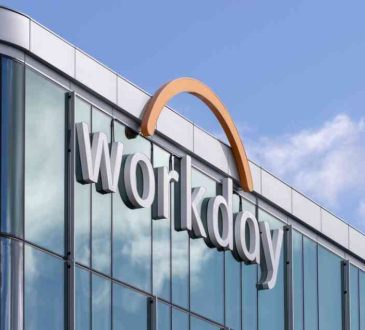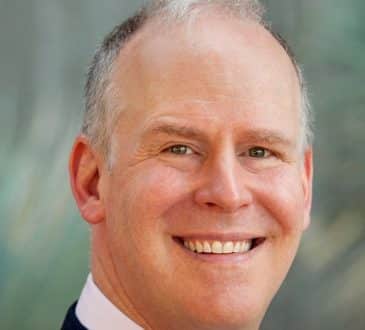C-suite agenda: a new paradigm for workforce

The marketplace is changing, for both business owners and those seeking employment. The rise of high-velocity markets and an increase in global mobility has led to a unique set of challenges.
The high-velocity markets are those markets that experience a number of characteristics such as: frequent launches of new competitive moves, entry of important new rivals, rapid-fire technological changes, short product life cycles and rapidly evolving customers-expectations.
Small and medium enterprises (or SMEs) are, of course, most impacted by these challenges. Despite making up an estimated 95% of global business (and 70 – 80% of global employment), they often struggle to carve out a market share and reach their proverbial “escape velocity.” A hybrid workforce strategy can be an efficient tool when it comes to managing flexibility, multiple strategic initiatives, specialized work packages and costs.
Talent Migration and the Rise of On-Demand Marketplaces
Traditionally speaking, businesses seeking employees with a specific set of skills would simply advertise the position in local forums and hire the best applicant to fill the role. As it has become more common to travel for employment and education, both employment opportunities and the individuals with the skills to capitalize on them have started to gather in specific locations.
Silicon Valley is a perfect example of the results of the talent migration and the geographical pooling of certain industries, which Ed Glaeser discussed in his 2009 research titled “The complementarity between cities and skills”. This unique situation has left SMEs in asymmetrical competition with larger businesses for limited and often remote talent and made it harder for them to hit ‘escape velocity.
This term, which generally refers to the speed at which a craft must travel to break away from the gravitational pull of a celestial body (around 25,000mph in the case of the earth), has become a buzzword in business media meaning the level at which a business reaches the point of sustainable, profitable growth. Thanks to start-up costs, overheads, and labour costs, reaching this point is hard for any business, but SMEs can struggle to meet the demands of modern, high-velocity markets.
Recent changes in the world have made remote working more common, and indeed more necessary, than ever before. As a result, those on-demand freelance labour marketplaces that have previously been on the fringes, or outside of the bounds, of traditional recruitment practices are experiencing a renaissance. By offering localized and regional SMEs access to global talent pools on an ‘as-needed basis, platforms like Cognisium, Upwork and Kaggle have made deploying an effective hybrid workforce strategy far more attainable for small and medium-sized enterprises across the world.
Drivers of the ‘On-Demand’ Mentality in Business
The focus of the average business has changed considerably over the last few decades. Hyperconnectivity and the exponentially increasing speed at which every aspect of culture is changing and being shared. That has made flexibility a necessity for most businesses. As the consumer has come to expect services and products ‘on-demand, entire industrial ecosystems have had to adapt to the change of pace.
The result has been a wholesale shift in mentality and focuses for most industries. Long-term views surrounding enterprises and the half-life of skills have become shorter as businesses have become forced to look beyond legacy projects and consider their adaptability and capacity to move swiftly with the pace of innovation, technology, and the opening and closing of delivery channels. The key drivers of the ‘on-demand or hybrid model for businesses of all sizes can be categorized as:
- The need to remain competitive in high-velocity markets
- The need for labour flexibility
- Competition for premium talent at a global level
- Marketplace volatility and the changing demands of global consumers and service end-users
The increased volatility of many markets has led to a large-scale shift away from traditional employment and growth models. The World Economic Forum’s report titled “Future of Jobs 2020” found that 43% of the businesses surveyed intended to reduce their permanent workforce as a result of technology integration. Meanwhile, 41% intended to reduce their core staff and increase their use of freelance contractors in order to gain access to specialist skills.
This is not an isolated finding. A further report by Harvard Business School that was titled “Building the On-Demand Workforce” reported that 90% of the C-Suite participants viewed marketplaces for premium, on-demand talent as important or very important to their future and ability to compete within the wider market.
This shift away from a traditional employment roster towards a ‘core’ staff that is supplemented by freelance and fixed-term talent within larger businesses is having an impact on SMEs, of course. SMEs whose main advantage, in previous years, was their ability to ‘think on their feet’ and react quickly are now finding that larger businesses are emulating this model and must react in order to survive and thrive. This is where an effective hybrid workforce strategy becomes essential to SMEs seeking to reach or maintain their “escape velocity”.
What a Hybrid Workforce Can Mean for SMEs
At the simplest level, an effectively hybrid workforce could provide SMEs with the edge that they need to stay afloat in the modern market. The ability to grow and shrink with the demands of business, while supplying a consistent level of quality to the consumers or end-users as a result of a skilled core team cannot be underestimated, especially for SMEs who are fighting an asymmetrical battle against large businesses, corporations, and conglomerates.
Beyond this, however, tapping into the ‘on-demand’ labour market has a unique set of benefits that are tied to the nature of freelance work as much as the level of expertise that an ‘on-demand’ expert can bring to the table. Freelance independent executives and specialists must cultivate a number of skills that include, but are not limited to:
- The ability to meet short deadlines
- The ability to extract key information quickly
- Robust problem-solving skills
- Adaptability to varied positions and focusses
- The ability to reinvent the materials, information, and systems to hand effectively
Thinking clearly on the move, so to speak, is a key feature of successful freelance work, and any freelance specialist or executive who is brought into an existing team will be unburdened by the knowledge of how things are usually done. This fresh perspective and the pragmatic, can-do attitude that ‘on-demand’ work fosters can be incredibly beneficial for any business that is facing new challenges and seeking growth.
What’s more, with an estimated 1.1 Billion freelance workers in the world today and the sector growing by 25% in the April to June quarter of 2020, on-demand workers now represent a sizable chunk of the talent pool. A hybrid workforce strategy is no longer a matter of financial flexibility alone. SMEs looking to compete within their markets and larger ecosystems need to engage with the on-demand market in order to have access to premium talent on an accessible scale. Therefore, the implementation of an effective hybrid workforce strategy could be the difference between reaching and maintaining ‘escape velocity,’ and struggling to survive in increasingly volatile and saturated marketplaces.
Creating a Successful Hybrid Workforce Strategy
Creating a successful and sustainable hybrid workforce strategy in both an individual and wider, the cultural sense is no small undertaking. While both supply and demand are currently high in terms of freelance work, the talent pool leans heavily towards the creative and technological industries.
While a staggering 36% of the workforce in the U.S. alone completed some form of freelance work in 2020, this work was mostly carried out in specialist, complex, or technology-led initiatives (primarily by highly educated female workers seeking to find working arrangements that accommodate their familial situation). The COVID-19 pandemic has accelerated the supply of freelance workers available through digital and premium marketplaces while encouraging remote and hybrid workforces within businesses of all sizes and natures.
Of course, the demand for specialist talent on an as-needed basis has been growing within many businesses. Over the last decade, the full force of what Schumpeter dubbed “creative destruction” (or the point at which innovation and manufacturing increase productivity to the point that it destroys and revolutionizes the economic structures of the world from within) has been felt in every sector. While SMEs have long been at the mercy of volatile markets and consumer biases, larger companies have also started to feel the effects of this volatility as a result of habitual and exponential innovation in manufacturing, technological, and delivery processes.
As such, a new approach is needed: a corporate-led re-envisioning of the business world as a whole to close the huge and pressing skill gap in a way that allows supply and demand to meet in all areas of business. A good example of this is the partnership between Freelancer.com and NASA in 2015. This partnership has crowd-sourced solutions to several issues and needs from 3D tools for robotic astronauts to mobile applications of all natures. In fact, Freelancer.com currently aids NASA in crowdsourcing talent, tools, and technologies. This enables them to meet the demands of their ongoing projects and the market.
This hybrid approach to problem-solving has become more common at the highest levels of business. AstraZeneca used on-demand platform InnoCentive to solve delivery issues associated with the RNA and DNA molecules they use in research, while Enel used the same platform to enable them to overcome challenges to their ability to meet the UN’s 2030 Sustainable Development goals. SMEs, too, can utilize ‘on-demand’ marketplaces to overcome their challenges and meet the sustainable growth and development goals in a way that allows them to reach a sustained and profitable status quo.
However, to sustain agility and flexibility at scale, businesses will need to engage in an examination of their collaborative work processes, people programs and technological infrastructure that may be required to accommodate a hybrid-led strategy.
The Future of “Talent On-Demand”
The writing is on the wall, so to speak: it is unlikely that the role of the modern employee will return to pre-pandemic parameters. Instead, it is likely that the future of the full-time employee will change more toward the undertaking of routine, baseline tasks within the core of a business or corporations’ remit, while specialized tasks will be increasingly outsourced to the freelance market.
Cognisium believes that a well-run hybrid workforce model will be the norm by 2025 and that core worker will be those who are experts in collaboration, effective communication, and collective intelligence management. As such, it is imperative that SMEs begin to shift their focus now to avoid being left out in the cold as the C-suite makes increasingly explicit, intentional, and systemic changes within larger corporations.
SMEs should therefore consider what their core tasks and needs are, what specialized talent they are likely to need in the immediate, near, and far future. Furthermore, SME owners should consider their current ability to communicate and delegate. Hybrid workforces pose many challenges because of the likelihood of time-zone differences and other barriers to immediate and effective communication.
Finally, a cultural shift will be needed to maintain the integrity and cohesion of a hybrid workforce. Incoming, on-demand experts, executives, and specialists must not be seen to be a threat to the existing workforce but should instead be a part of the wider company culture so that all members of a hybrid workforce can contribute in an optimal manner. Likewise, the position of freelance experts as workers ‘outside the box must be respected. Ernesto Ciorra, Enel’s Chief Innovability Officer, encourages businesses to be humble and remember that the best solutions to in-house issues often come from those outside the company. This is, in part, because such team members are not shackled by the knowledge of what has been done before.
Of course, if the future of mixed workforces and ‘on-demand’ talent pools is to be bright, all of these changes must be made confidently and with clear and concise changes to policy and procedure. This is key to ensuring that all enterprises have the capability to maximize the expertise of these workers while offering stable and sustainable environments for the continuation and growth of the remote and on-demand talent marketplaces that will be increasingly entering the fringes of the traditional workplace.
Written by Dr Dorel Iosif.
Add CEOWORLD magazine to your Google News feed.
Follow CEOWORLD magazine headlines on: Google News, LinkedIn, Twitter, and Facebook.
Copyright 2024 The CEOWORLD magazine. All rights reserved. This material (and any extract from it) must not be copied, redistributed or placed on any website, without CEOWORLD magazine' prior written consent. For media queries, please contact: info@ceoworld.biz








